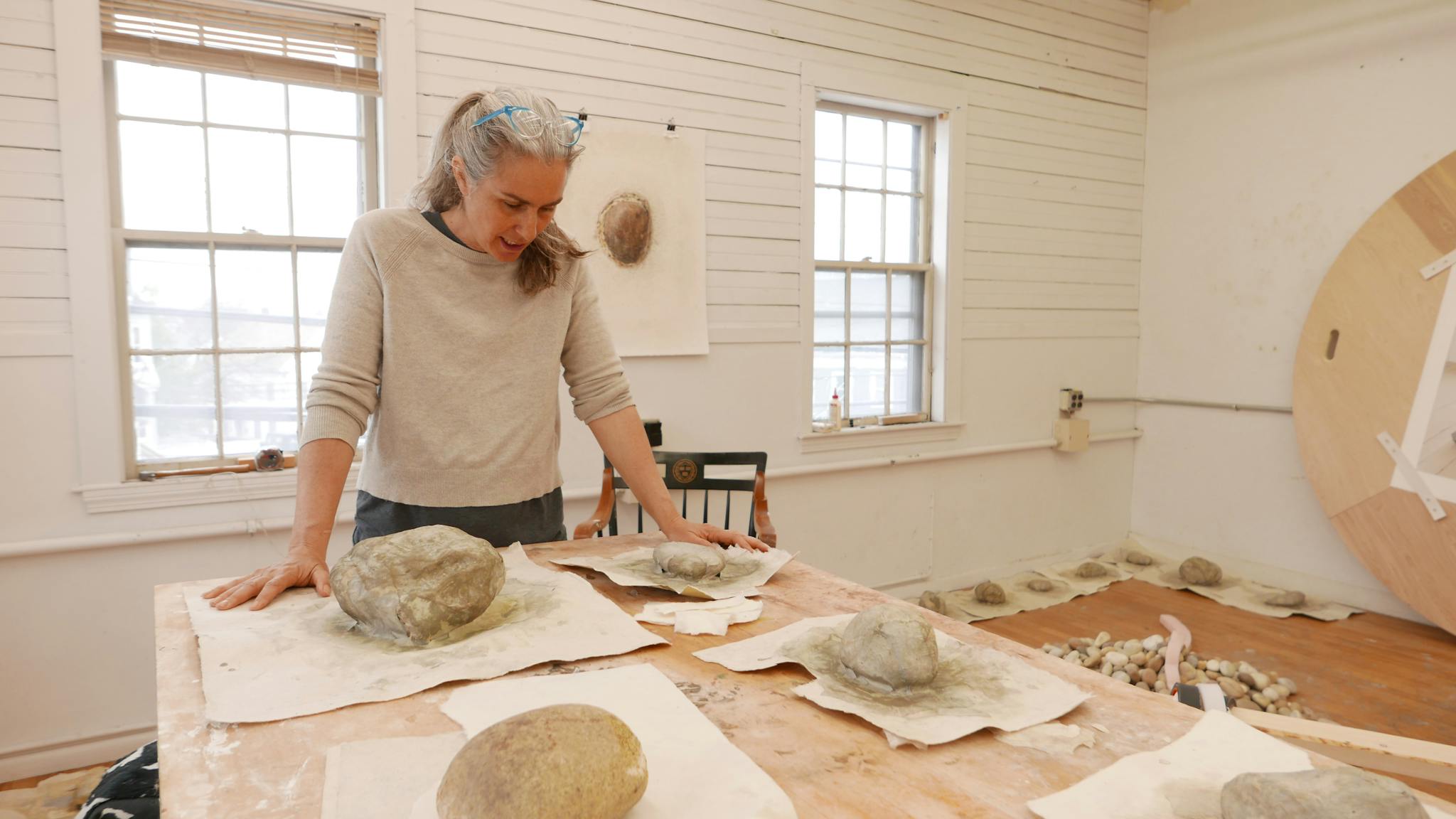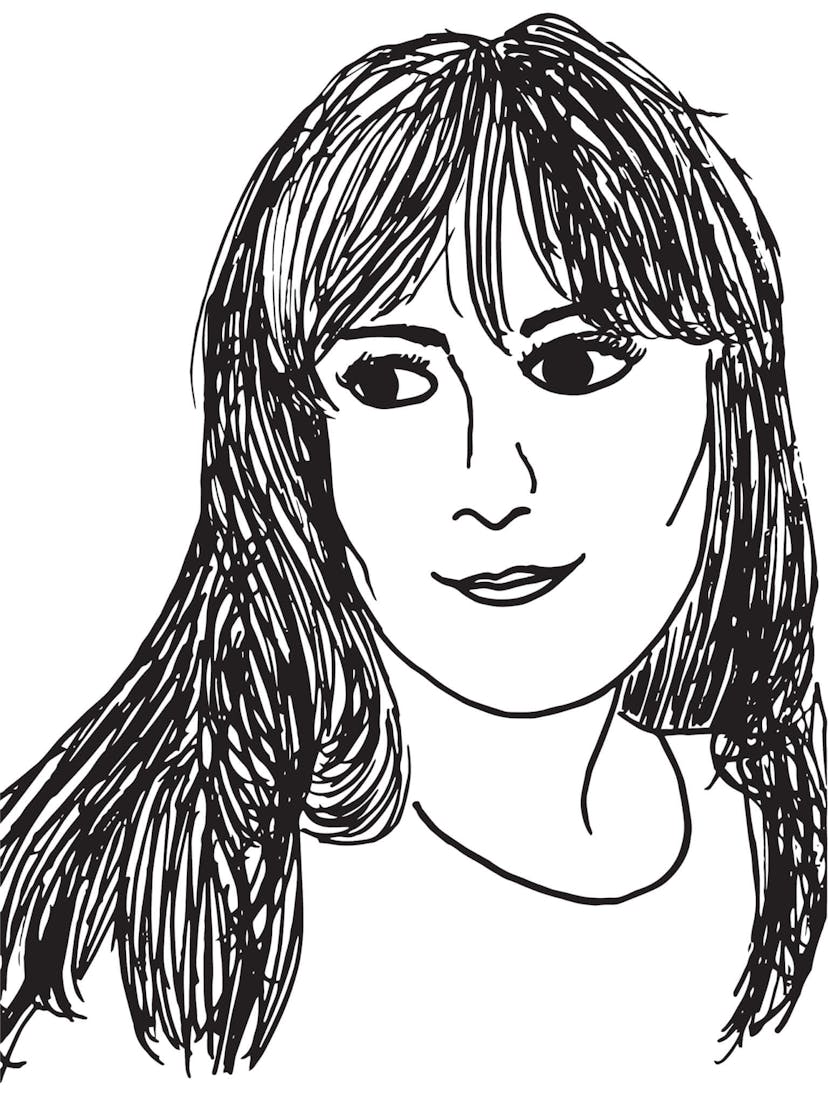Having a conversation with Tory Fair feels like finding the missing piece to a puzzle you’ve been working on for five years. Often blending artificial and natural forms to create something entirely new, Fair’s sculptures are grounded in an honest human experience. Her work is deeply referential, yet approachable; familiar, yet hard to place; deliberate, yet seemingly serendipitous. And Tory? She’s the missing puzzle piece connecting it all.
At Drive-By Projects—a small, but mighty space in the heart of Watertown—“Tory Fair: Portable Archive” presents somewhat of a departure from Fair’s multi-decade practice as a sculptor. Rather than furthering an oeuvre of work situated within her own archive of self, she turned to her feminist predecessors. In a research process that has roots from over twenty years ago, she looked to the seminal exhibition curated by Susan L. Stoops in 1996 at the Rose Art Museum at Brandeis called “More than Minimal: Feminism and Abstraction in the 70s.” At the forefront of this ongoing research process was a newly developed, yet long anticipated correspondence with Mary Miss, a visionary of early environmental and socially engaged public art. With Miss as her theoretical guide, Fair set out to explore the “More” in “More than Minimal.” What she found was not a definition, but rather a series of relationships—between spatial boundaries and orientations, between feminism and activism, between connectivity and distance, and between generations of artists and herself.
At the center of this new body of work are two older ones. For “Portable Archive,” Fair has adopted the form of Miss’s “Portable Window” (1968), a round, wooden wheel with a rectangle cut from the center. While Mary Miss would use the wheel as a frame to explore landscape vistas, Fair has created a frame for viewing the archives of her own work. Inside Drive-By Projects, the “Portable Archive” holds a photograph of “Heap,”a massive, iterative sculpture Fair has formed from various cast objects since 2015. Against the adjacent walls, Fair displays drawings she shared with Miss depicting images of Miss’s work beside renderings of her own.
On a hot summer evening, Tory Fair and I met at Drive-By Projects to discuss the research and production behind the installation. We sat outside on little stools while observing the arrangement of objects behind the gallery windows. Like looking into an aquarium tank, we peered and pointed, connecting the dots between Fair’s process and that of her artist ancestors.
The following interview is an edited transcript of our conversation.
— Jameson Johnson
Jameson Johnson: Since we’re among your most recent body of work, I suppose we should start there. For this show, you’ve presented a series of drawings, writing, and sculptures based on your ongoing research of the 1996 “More than Minimal: Feminism and Abstraction in the 70s” exhibition Susan L. Stoops curated for the Rose Art Museum at Brandeis. Where did your interest in this exhibition stem from?
Tory Fair: I feel like this project has been a long time coming for me because I work right next door to the Rose and I’ve spent a lot of time with the collection. I’ve had the privilege of being at Brandeis since 1999 I’m currently on the Board of the Rose Art Museum. I’ve had the opportunity to see these pieces again and again through different exhibitions, catalogues, and contexts. I’ve begun to realize that seeing the works of Mary Miss, Jackie Ferrara, Jackie Winsor, and Michelle Stewart—they were really starting to become part of my constitution not only as an artist, but also as a teacher.
Additionally, the curator for that particular exhibition, Susan Stoops, is someone I’ve maintained a long-term relationship with, and so looking back at this show was also a way to look back at these artists and what Susan as a curator was considering. I framed my research around this question of the “more” because the exhibition was called “More than Minimal.” I began to ask myself, what does that “more” look like in the studio today? I wanted to respond to this elusive “more” so that I could identify it and allow it to participate in my own work.
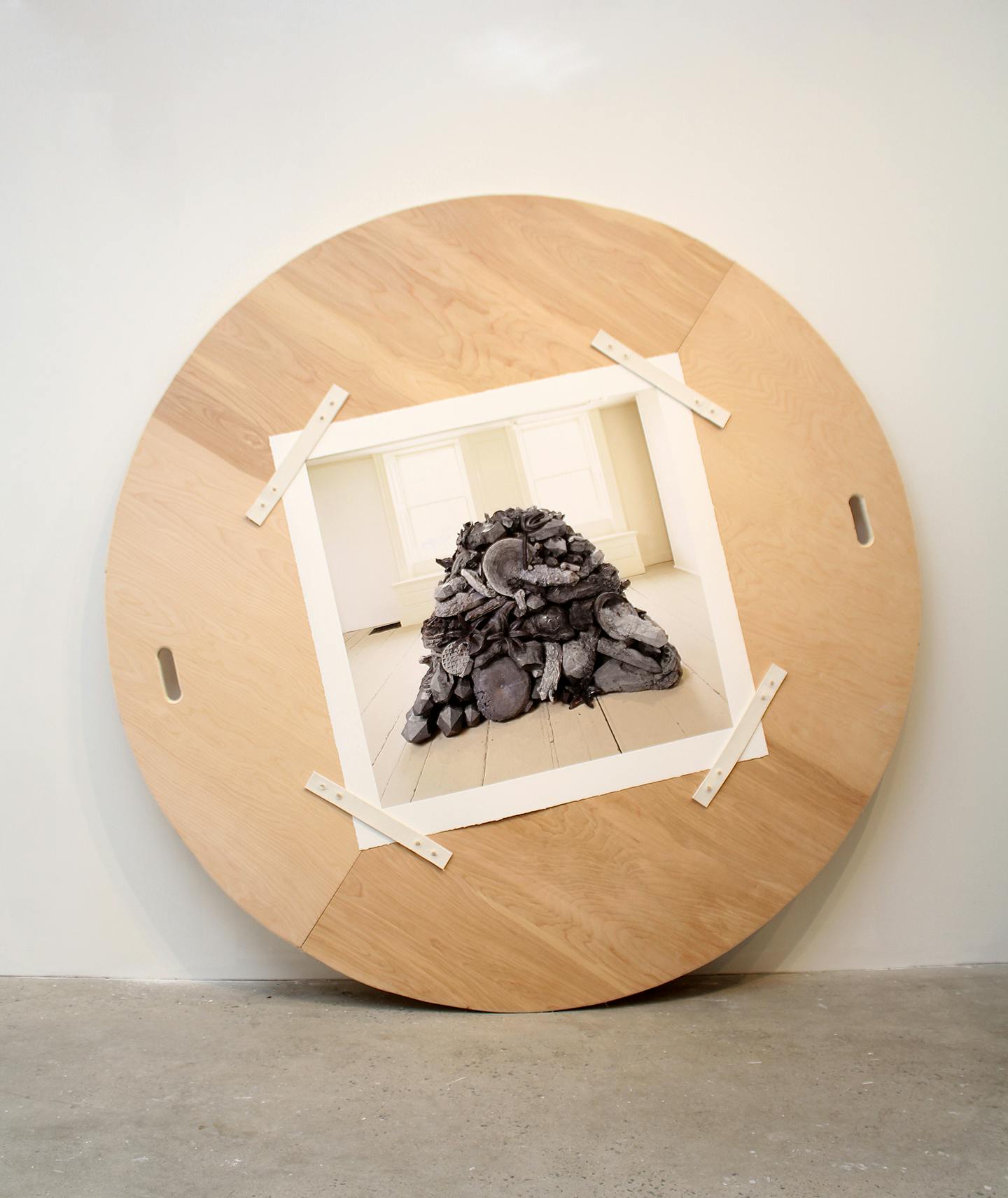
Portable Archive (2019). 7’ x 7’ x 2”, plywood, archival photographic print, felt.
JJ: Well, now I’m curious. What have you found that “more” to mean? Or have you found it at all?
TF: I think when I first started to reach back, I found the catalog that accompanied the show to be a really magical thing. It contained a lot of different writers and a lot of information. I think my research process really began by combing through the essays in that catalog. My immediate sense was that materials and touch played a key role in the impact of this art. So initially I was thinking that the “more” had to do with that sensibility. But the thing I really came to love about this show was that it placed these women as minimalists who were having a dialogue between abstraction and feminism. The pieces in that show taught me that sometimes it is less about looking at an object, and more about being there with it. This way of looking at the work was less scripted. Instead, I was looking with the work in the context of the wall, the floor, and the entire space.
I think the “more” can be a lot of things. In this show it is generated from a personal place for each artist, and it is an expansive idea of language. Let’s break up some of the binary thinking and engage a more complex area of the in between. The “more” has resilience and these sculptures continue to have agency today.
JJ: Within this canon, you’ve narrowed in on the work of Mary Miss. What drew you to her work, and how have you created work in response to her’s?
TF: Mary Miss was the first artist that I was introduced to as an undergrad. I was interested in architecture and the Earth Work artists and found that Mary’s work was placed in both of those categories. She made a piece in Battery Park in the 70s, then later went on to produce a lot of architecturally collaborative pieces on campuses, and eventually created a nonprofit called City as Living Laboratory. I actually just read a piece in The Brooklyn Rail about this project she’s doing in Milwaukee where she’s creating a water atlas for the whole city in order to raise the awareness of natural resources. I suppose I’m most interested in how her early work as an artist and activist has developed since the 70s and maintained momentum.
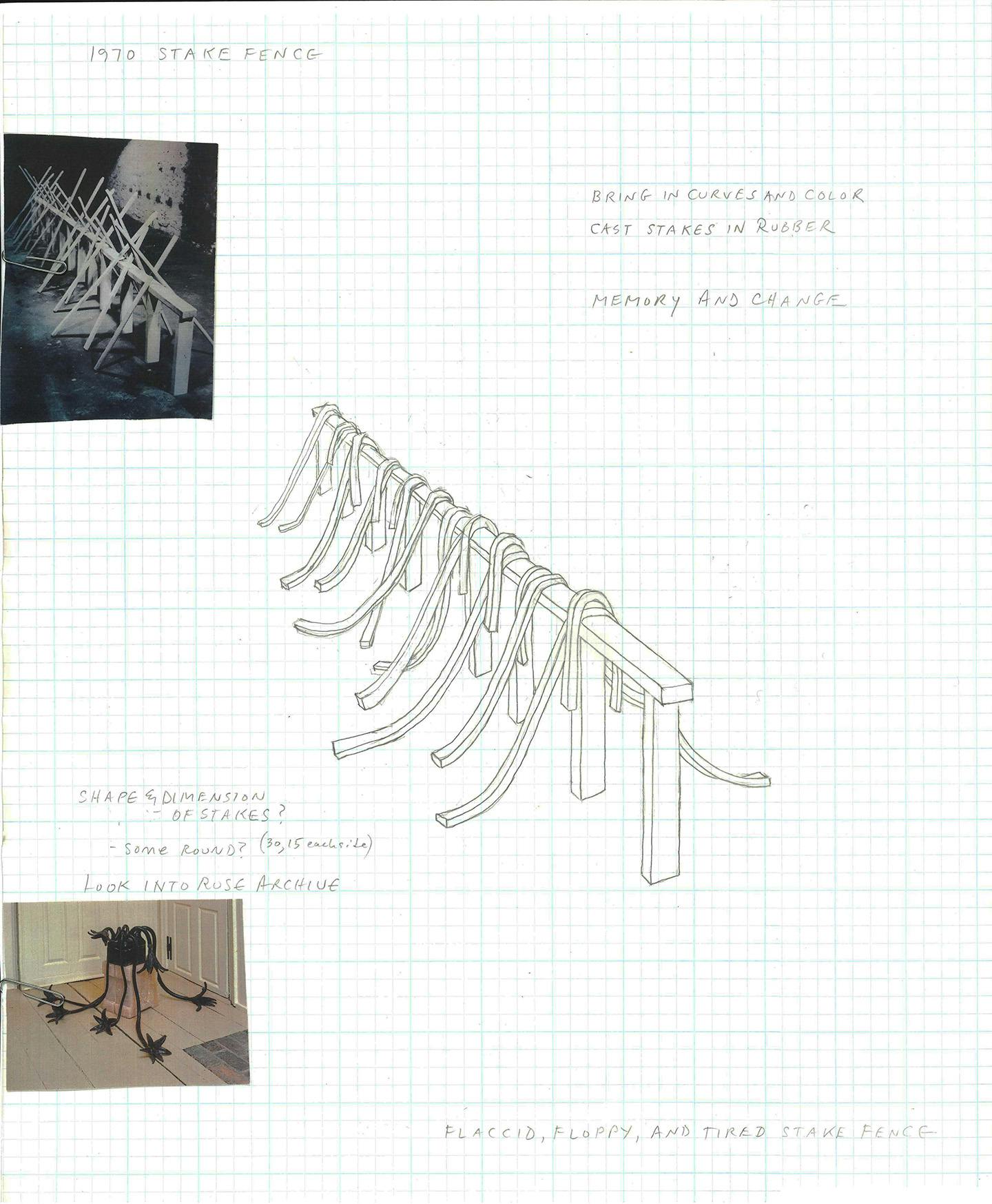
Research Drawing exchanged with Mary Miss (2018). 17” x 14” graphite on paper.
JJ: One of the exciting elements of this research is that you have engaged in conversation with Mary Miss, corresponded with her via drawings, and then created work as a response. This is somewhat new to your practice, correct?
TF: The research drawings that I’m showing here at Drive-By do something different for me. I felt different making these because I knew I was sending them to Mary. They were kind of like letters—a sculptor’s letter to another sculptor. And to me, that form made the most sense because I don’t like writing, I’m not a good writer, but I do love writing letters. So then I started to think of them as letters that referenced her earlier work. I was considering the lean, the line, and the border as elements between her work and mine. It felt tender. It was especially amazing that she had my drawings out on her desk when she told me something along the lines of, “Thank you. It’s great that these pieces are still being thought about.” It’s like this weird sisterhood of sculpture that allows lineage to be continued. It really connects to this idea of being a steward.
JJ: This notion of “stewarding” comes up in several areas of your work; in teaching, in collaboration with others, in revisiting your own history. Can you expand upon this idea further?
TF: I often talk about stewardship within the context of growing up in an old house and watching my parents try and maintain or steward the historical significance of the house. I feel that right now, with this work, that I’m trying to steward some of those ideas from the 70s that were so important to later movements. It’s actually really interesting that you see me being a steward to my own work, because I haven’t really wanted to identify that in my own timeline yet. I suppose I’ve been more open to that idea, especially in the last couple months through my research work, the interviews with Mary Miss and Jackie Winsor, and through conversations like this one with you. I’m feeling really grounded in my own work, to the point that I can now begin to look outwards.
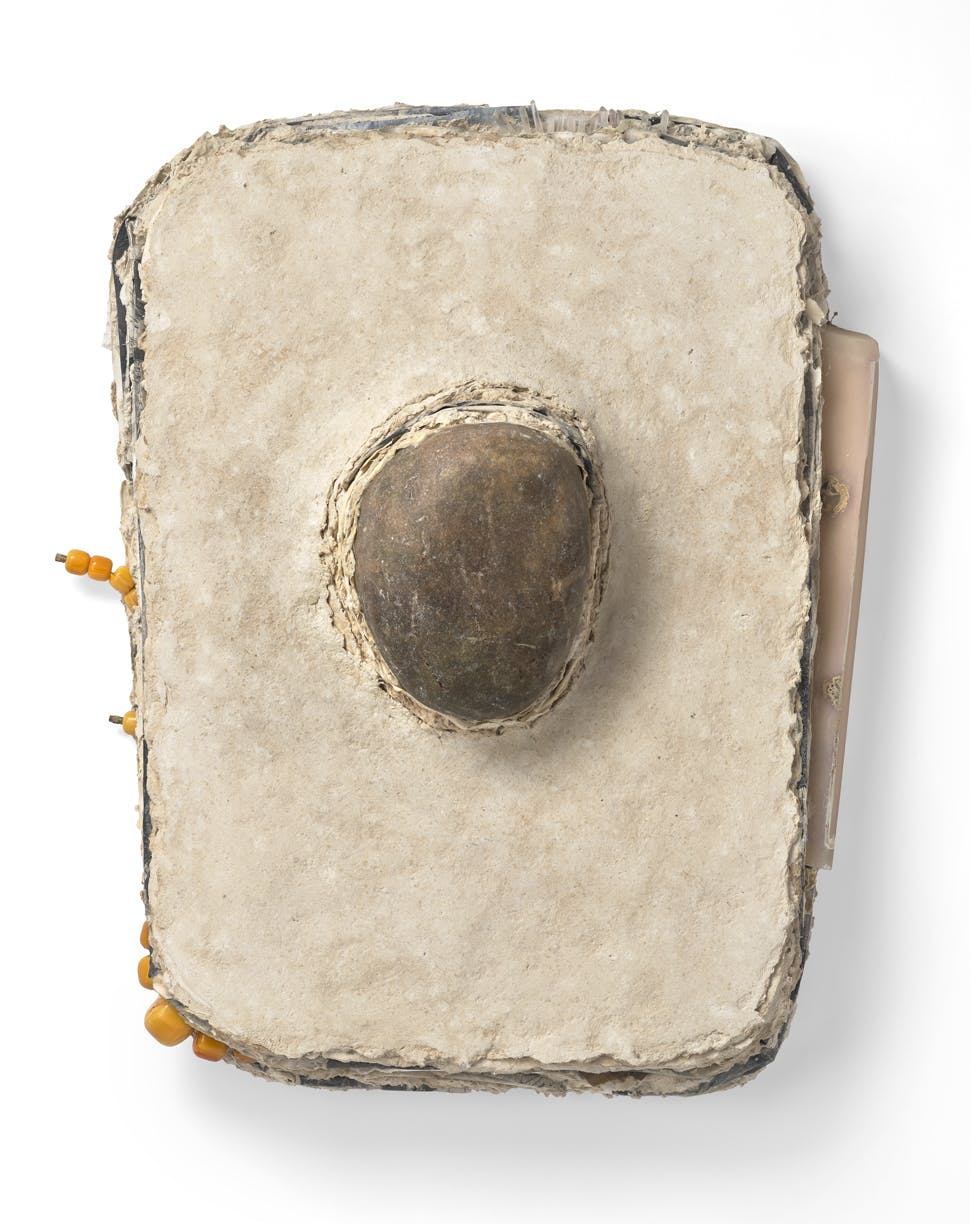
Paperweight (Amber Bead), (2018). 26” x 22” x 5”, various fabrics, paper, stone, personal items. Photo: Stewart Clements.
JJ: For those that are perhaps unfamiliar with your work, it might not be entirely evident upon first glance that process or “stewardship” play a key role in the development, and eventual final form of your sculptures. How do you create space for your work to take shape?
When I am in the studio it is just that—a practice. For me, it’s like running around the track before game time in order to get warmed up and prepare myself for the real game time. So a lot of the things that I do in the studio are moments and experimentations that really need a site to fully complete them. The studio can be a very quiet and isolated place to be non-verbal—and that’s a beautiful thing! But, in this past year, I’ve felt a drive to get out of the studio and turn to a more public or interpersonal process.
JJ: Aside from this current research-based work, your studio practice often involves archiving and creating work from your own personal history. This is evident in your “Paper Weight” series, but especially so in “Heap”—a large arrangement of reconfigured concrete objects that changes with each installation. How did you first begin creating that body of work?
TF: I think that when I started working on “Heap,” I didn’t know exactly where it was going to lead so I just started making a lot of sculptures out of concrete and rubber. I had limited means, so I wanted to be able to work with cheap materials and make an accumulation of smaller sculptures. The objects were hybrid in the sense that they came from my every day— the basket, the soccer ball—things around me. Bringing them into the studio and and casting them gave me a way to move from making objects to marking a site. At this point, it became evident that sculpture and drawing are almost the same act for me.
This work was first shown at Proof Gallery, and really the installation was unknown to me until I got into the space. I played around in my studio, stacking the objects in different ways, but I wanted to respond specifically to the space where the work would ultimately be shown. I really view this piece, in all of its iterations, as a way of claiming and describing a space through this accumulation of objects on top of each other. However, it was everything else surrounding that show that really became a pivotal moment for me. I got back in touch with Susan Stoops and she visited the studio a few times during the process. We made a small catalog for the show that included an essay by Susan which really pushed me to look back at my own history and practice as an artist.
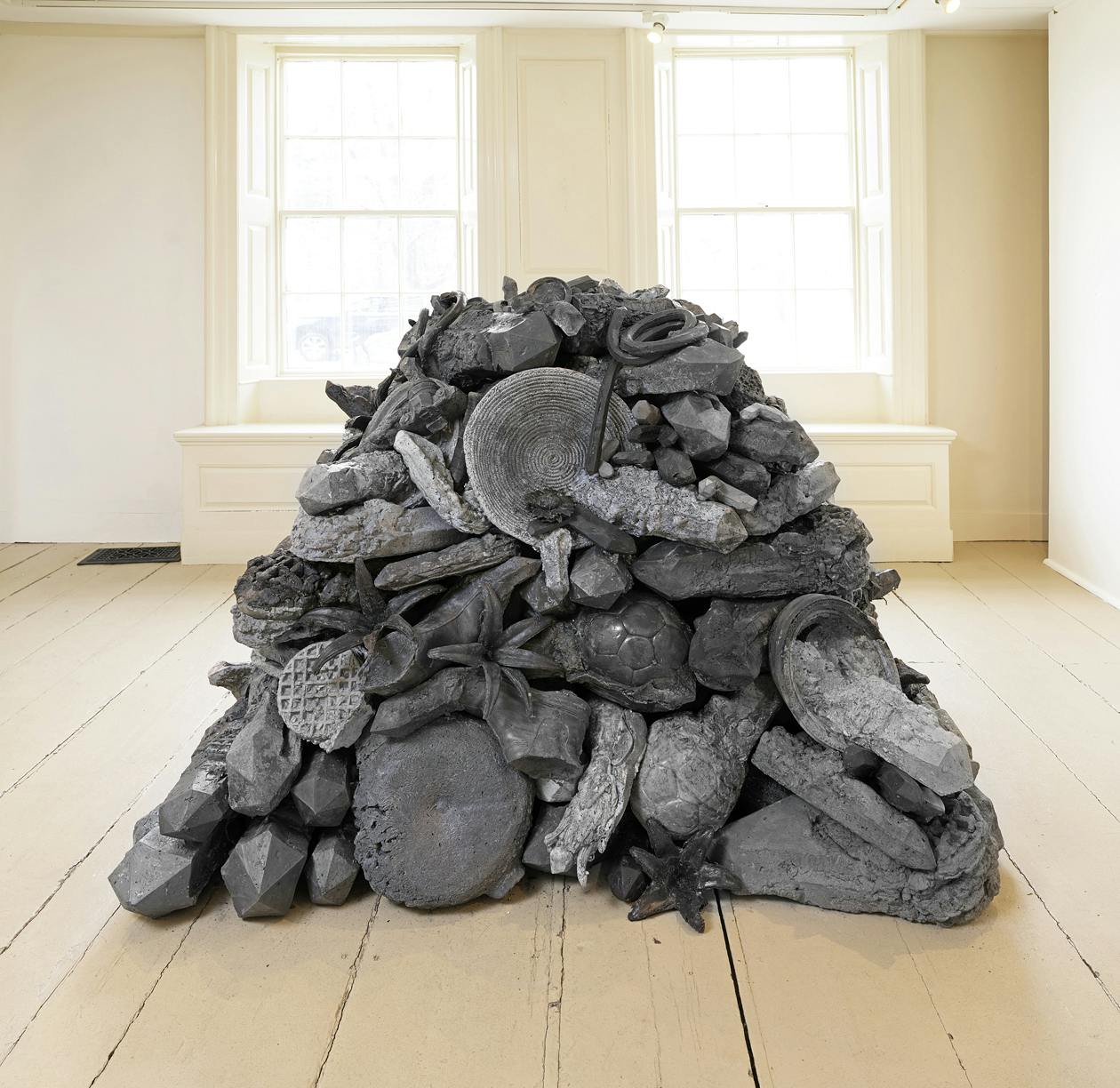
Heap (2017). Installation view, Concord. Concrete, rubber, foam, wax. Photo by Stewart Clements.
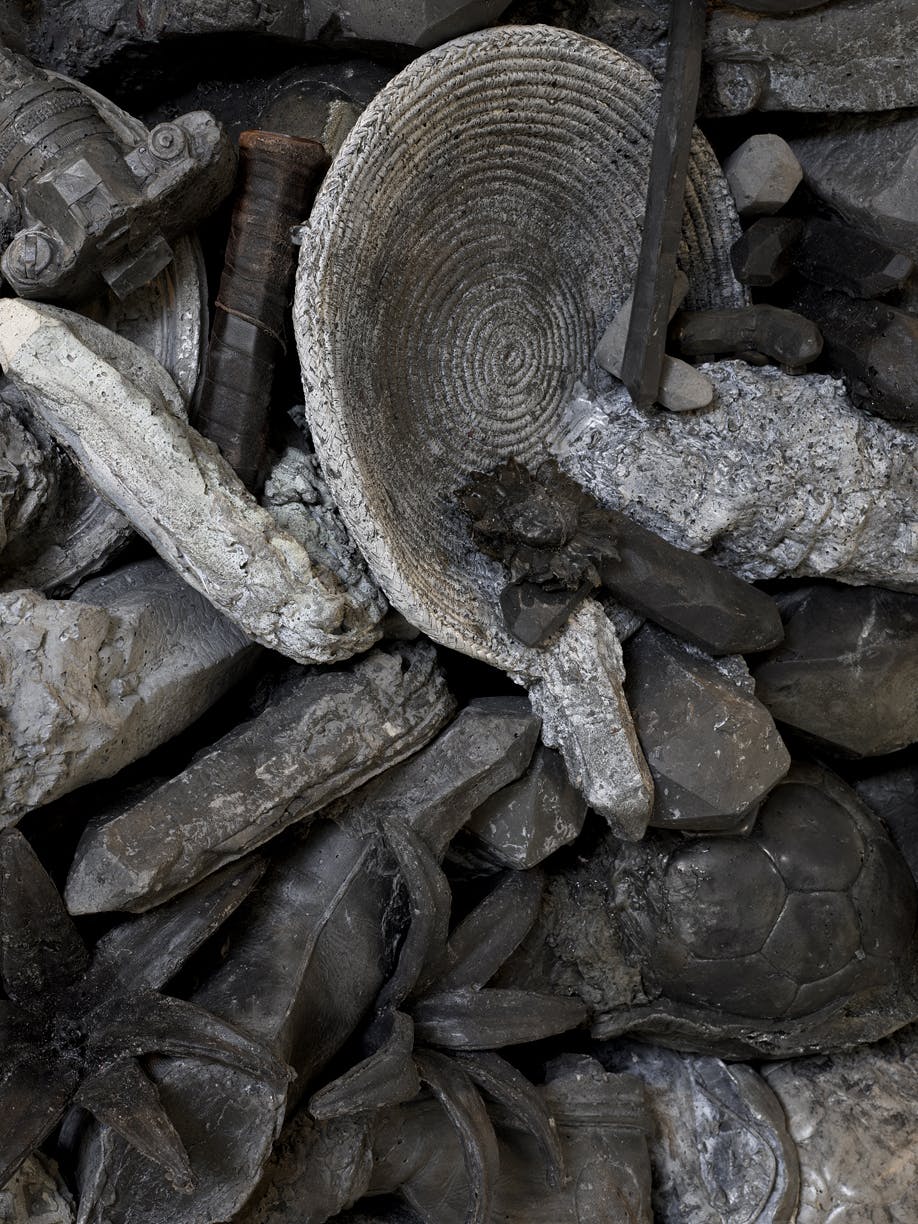
Heap (2017). Detail view. Concrete, rubber, foam, wax. Photo by Stewart Clements.
JJ: What part of your personal history started to emerge?
TF: Well, my practice really began as an undergrad, but I think I always refer back to my experience as a young artist right out of college working for James Turrell at the Roden Crater. Through this current research process, I’m really trying to embrace myself as a younger artist. Years later, it’s hard to always love everything you’ve done. I think it’s easy to do something and when there’s not much attention given to it, you kind of move on. However, while looking back at my work, I’ve had these moments where I realize that there was really something significant there all along. I’ve tried to recognize that I still love some of my older sculptures, and I need to take care of them. This is all to say, that I’m looking back at the past thirty years of being a sculptor and giving myself room to practice a more holistic affirmation of my process through the years.
JJ: With regards to “Heap” you mentioned before that this process allowed you to “cannibalize your own history.” Could you tell me what you meant by that?
TF: During that creation process, I started to deal with the fact that I do have a love affair with objects and I have a hard time throwing them away. The “Paperweight” series came out of a need to transition from the weight that “Heap” was taking up. I wanted to make drawings that did the same thing as “Heap” in terms of marking a space and claiming it. It’s a very literal way of saying “this is a drawing” and “this is a rock that marks a space in the drawing.” I extended the process of layering and creating edges in order to show the history of this personal sediment. This began to activate that site in a more emotional way.
I think there’s something about getting all the factors in line to really look back at my personal history and practice and to create more work out of it. I needed the right space, with the right materials, with the right amount of budget, with the right amount of energy, with the right amount of time. It’s really about the right place and right time to have the freedom to make that kind of work.
Honestly that’s where I’m so lucky that I have a teaching job because I can carve out a lot of time to try and create this “right place right time” scenario. It’s certainly not always easy. Roadblocks always seem to appear, but that is part of the process too.
JJ: Right, of course. Beyond some of the freedom that teaching provides, what excites you about working with your students?
TF: I think teaching is one of the most political things I do because I’m automatically put in a position of power. I love waking up in the morning and either going to my studio to make sculptures or going to a studio with younger people to make sculptures. Every year, the students keep changing, and that changes me. Right now, the students are really challenging, yet exciting. They’re challenging the norms of language, gender, access, and so many other things. I think that sculpture has the capacity to expand language, as I recognize with gratitude in the “More than Minimal” exhibition. That show gave space to these pioneering women who wanted to expand the spectrum of binary language. I feel like I need to do more. And I have this opportunity as a professor and as an artist. This whole research process has made me feel really connected to my mom who was really active in politics, fought for watershed rights, and was the mayor of our town. At the Roden Crater, I was very involved in the land rights surrounding the crater. And of course Mary Miss has been fighting for our natural resources since the 70s. I know that I can participate and be a steward for these ideas. And I feel as though I’m participating in these ideas through teaching, but I also need to do it in my own work and personal practice. It’s a messy pivot, but it’s integral to where I am in my process today.
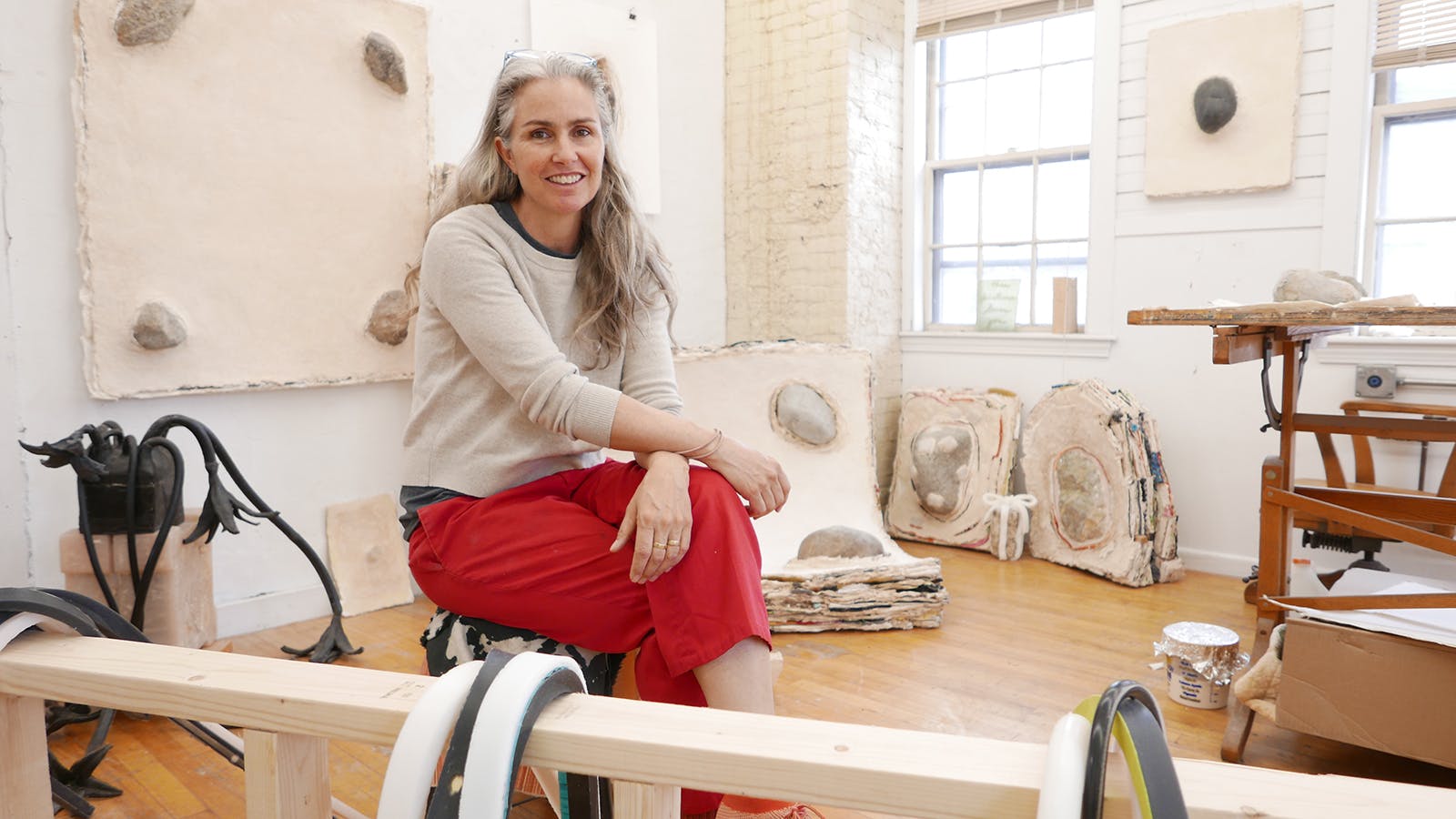
Tory Fair, studio view, 2019. Photo by Allie Humenuk.
JJ: As you continue to make this pivot in your work, could you share about some of the projects or research we can expect to see from you in the future?
TF: In September I’m going to be creating a piece at RAIR, Philadelphia (Recycled Artist in Residency) where I’m going to be using a waste stream and reclaimed materials to create a piece on site at RAIR that engages an adjacent superfund site. So not only is the object going to be charged but the ground in which it rolls on it’s going to be supercharged. So for me that’s another really exciting way to get the work out of the studio and into a very political and environmentally conscious place.
In the meantime, I am going back to that idea of running around the track and staying in shape in the studio. I have some drawing pieces and material drawing pieces that I don’t know exactly where they’re going to go, but they definitely participate in that dynamic of cannibalizing older icons in my work and trying to find a way to reinvigorate them where I am right now.
“Tory Fair: Portable Archive” is on view at At Drive-By Projects, 81 Spring St., Watertown, through Aug. 8, 2019.
